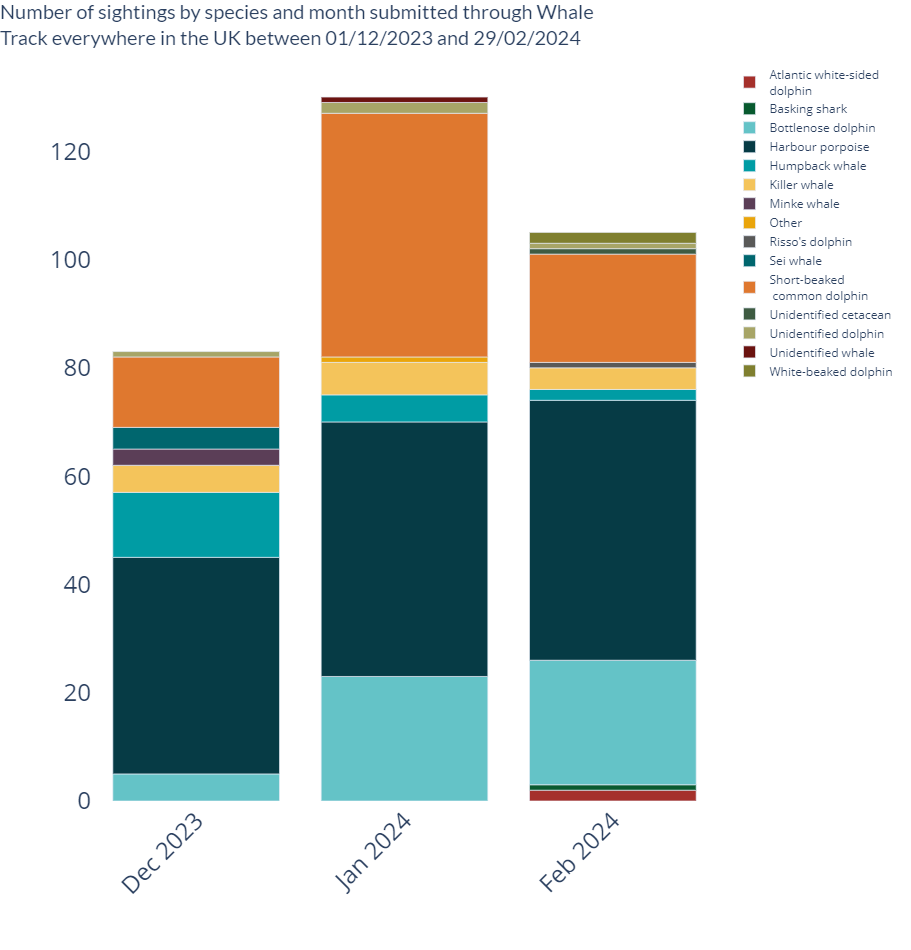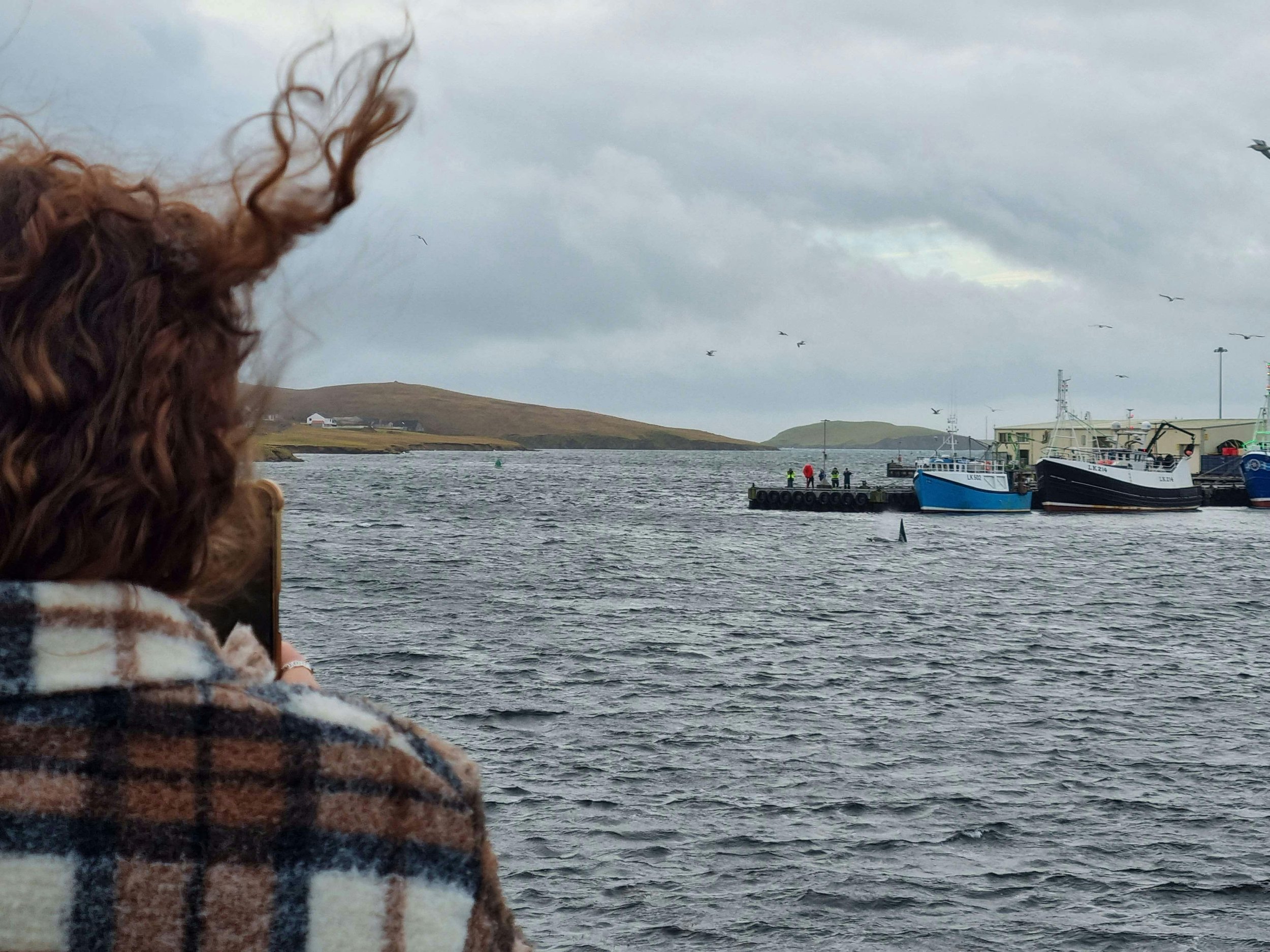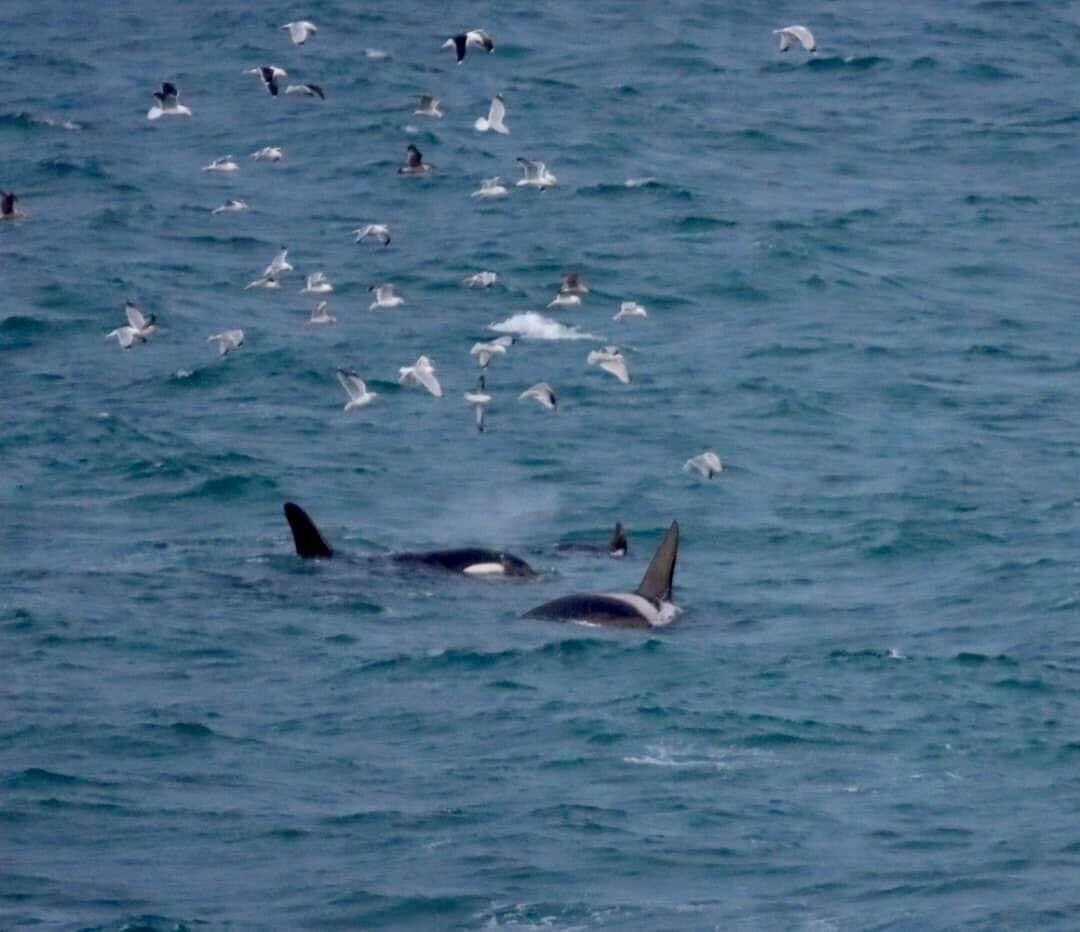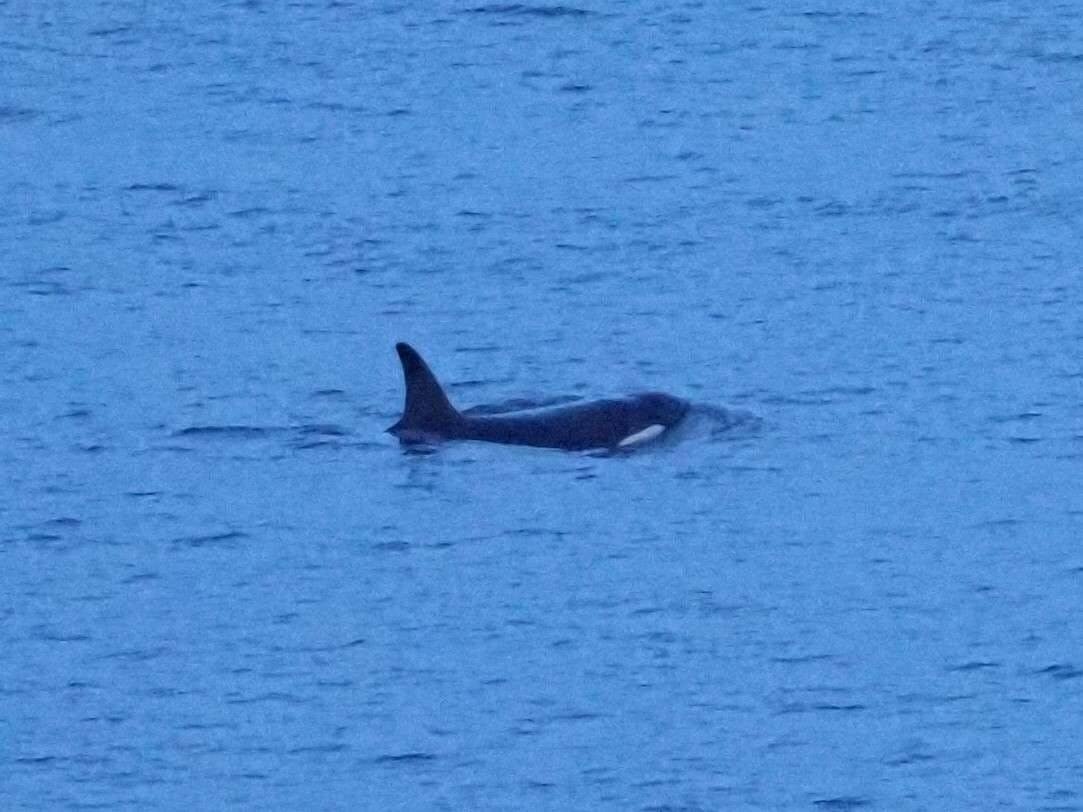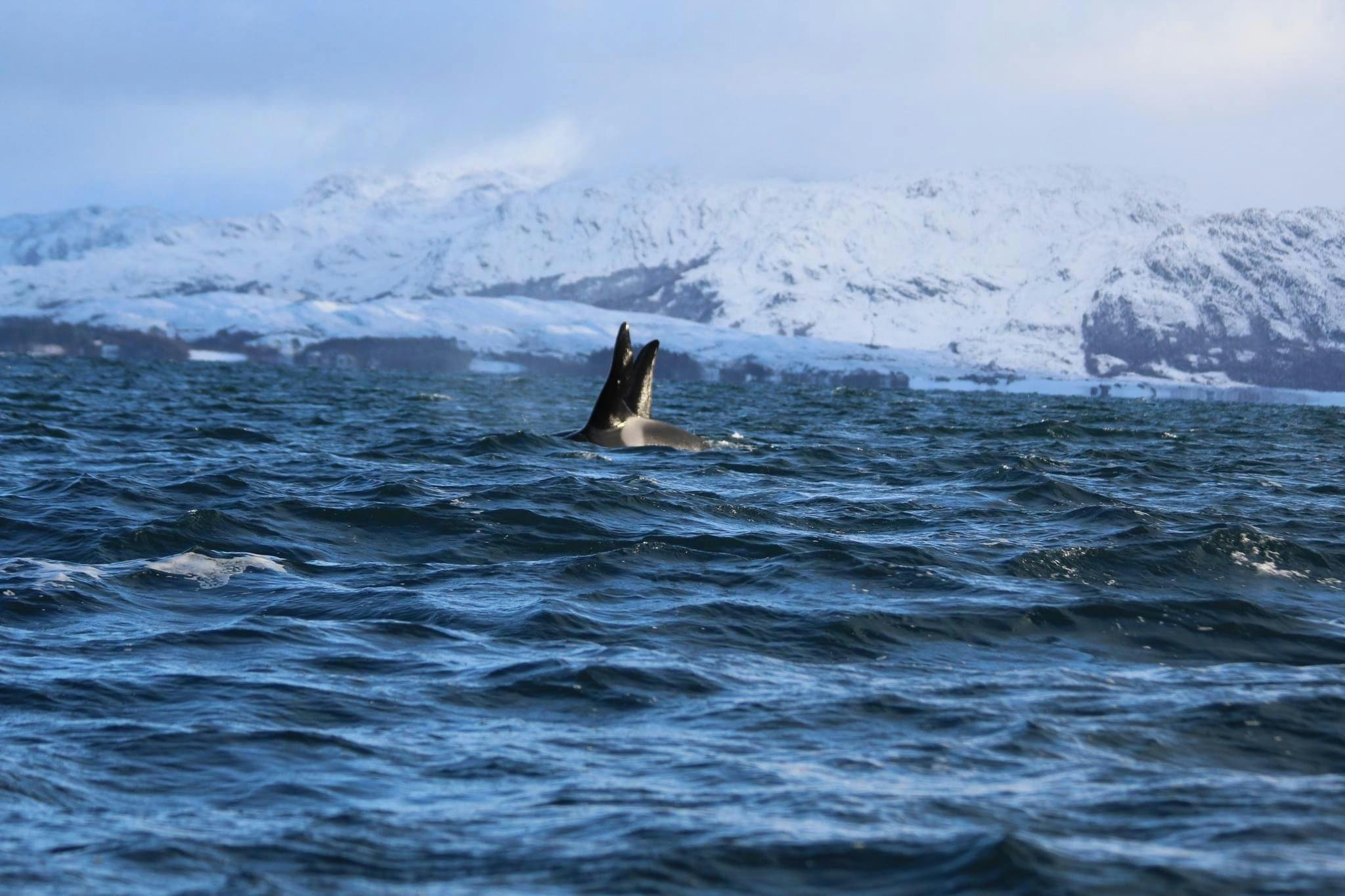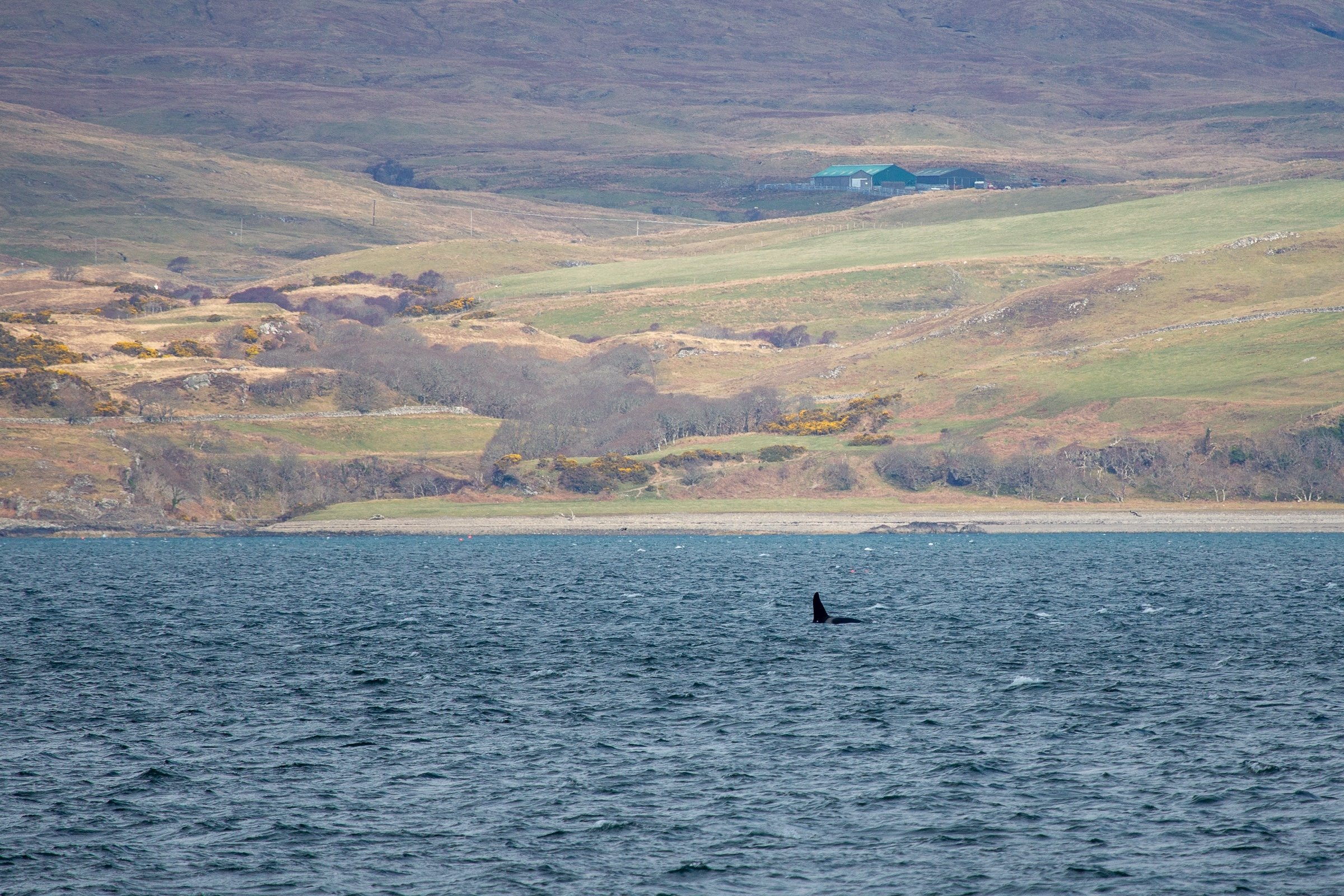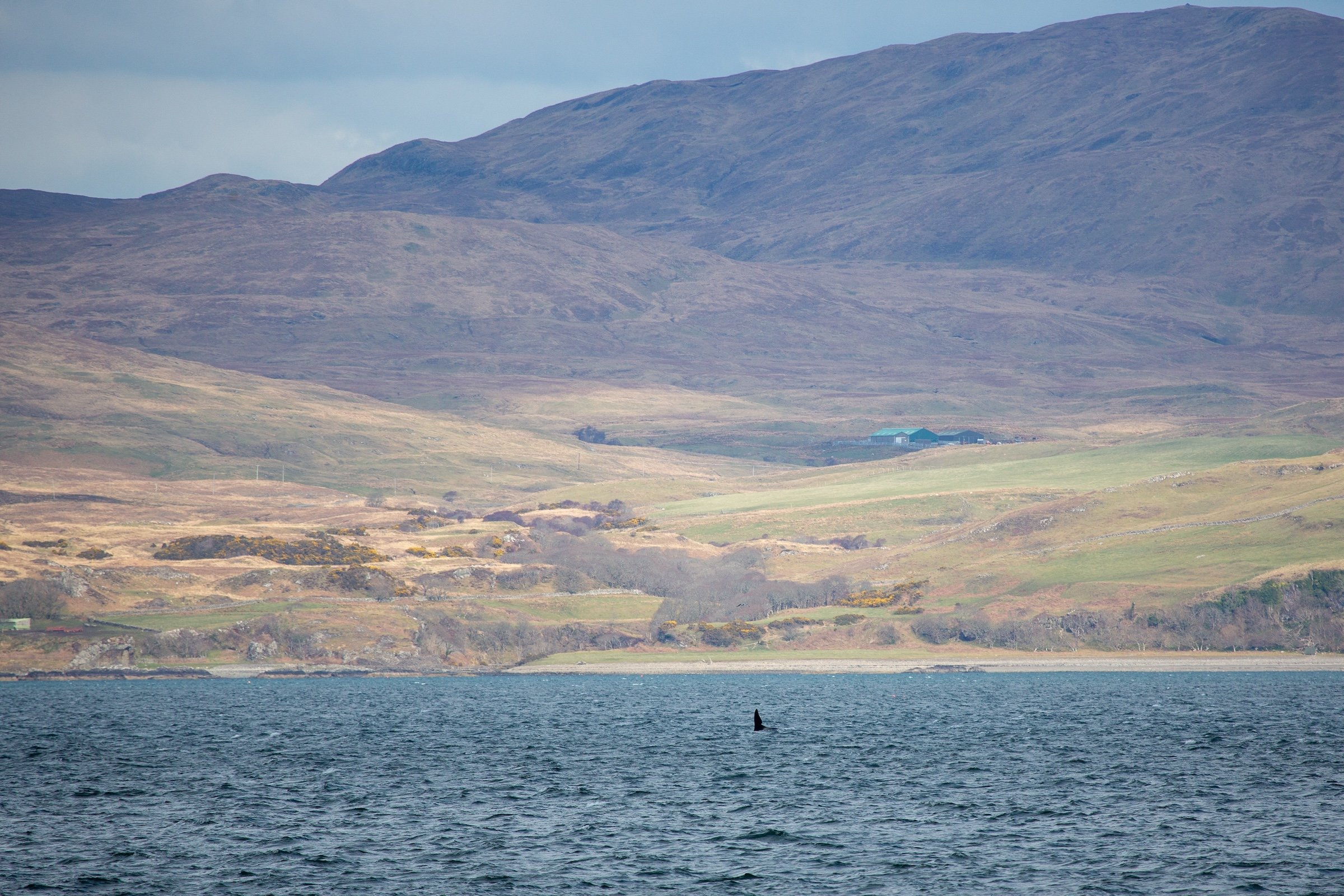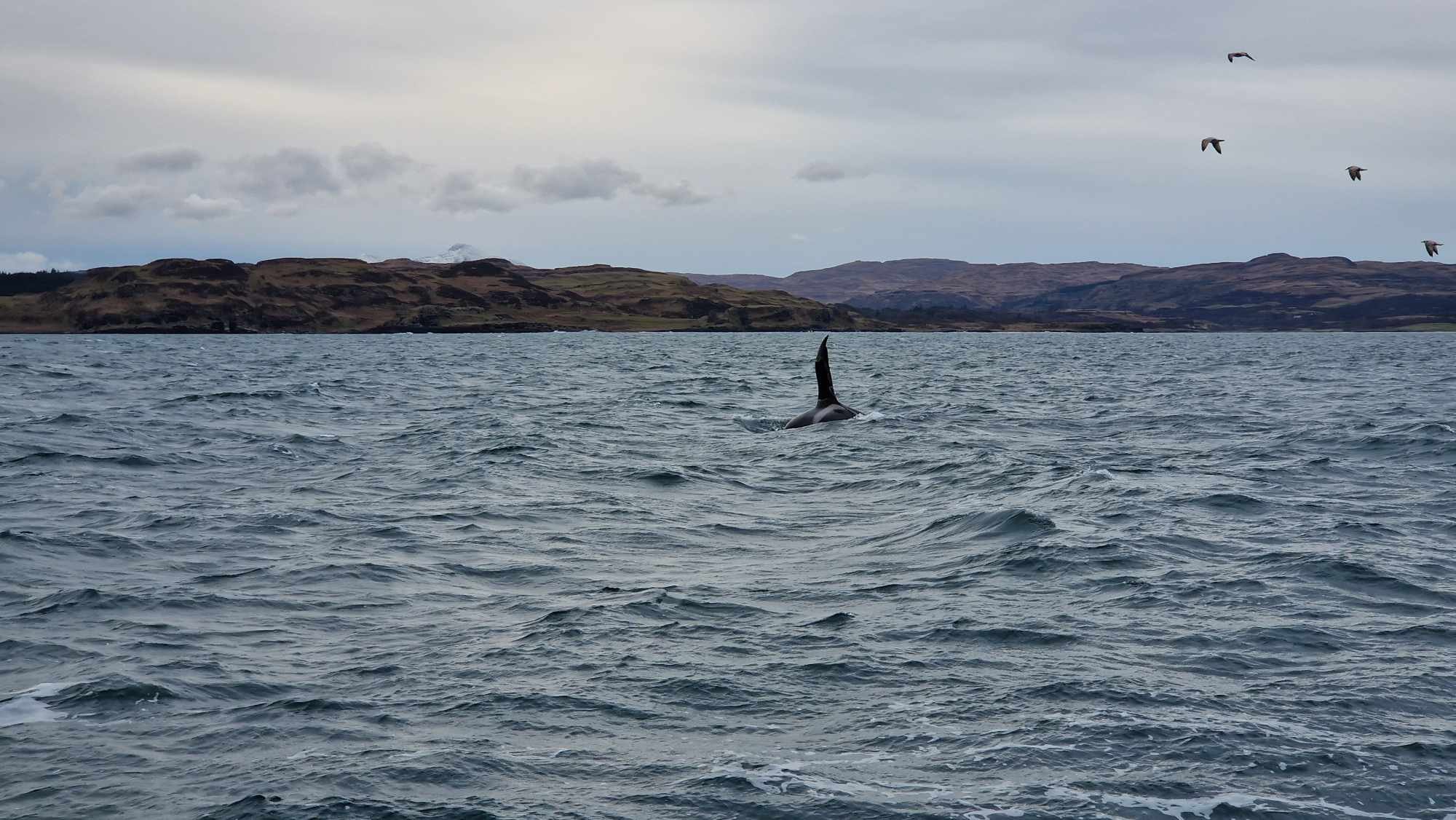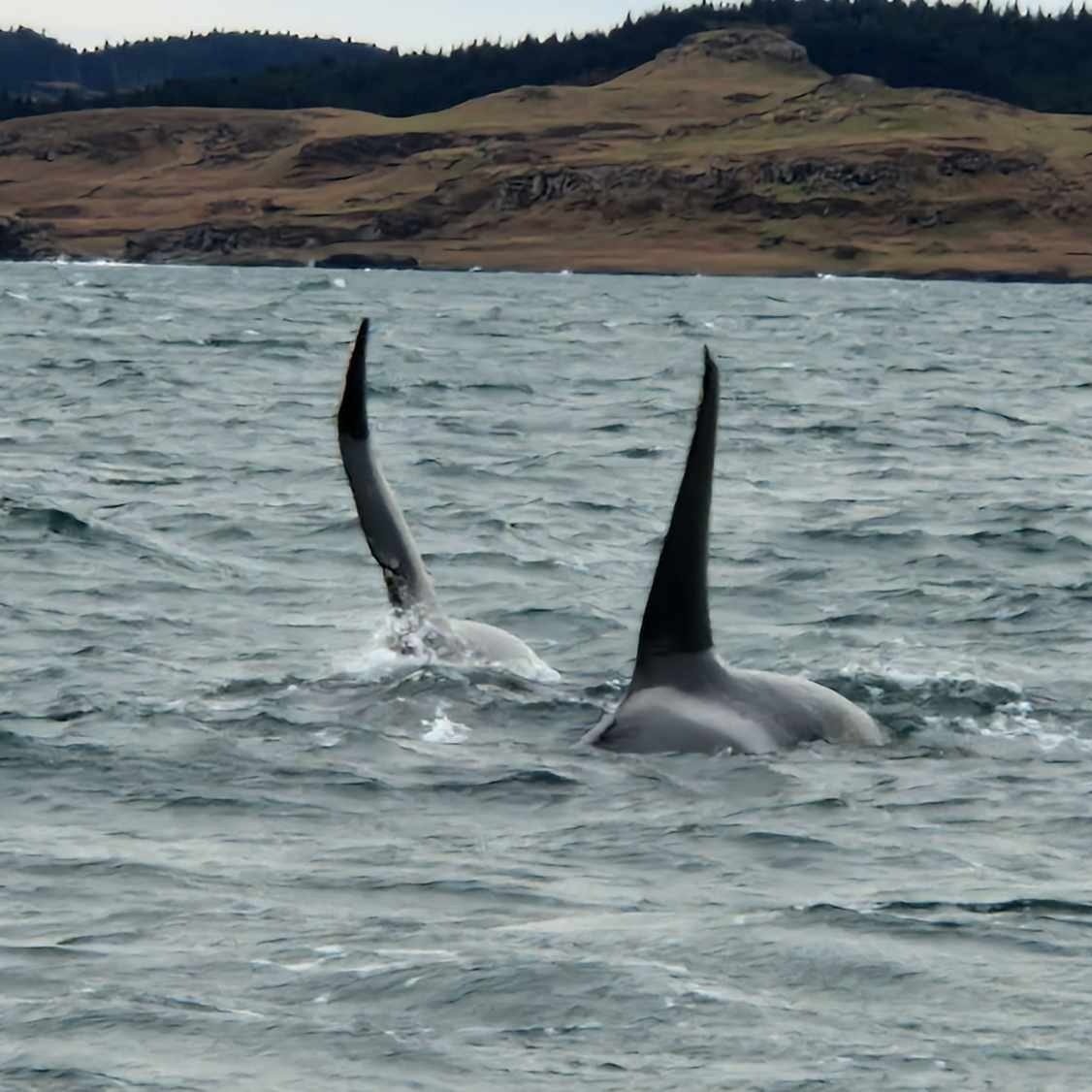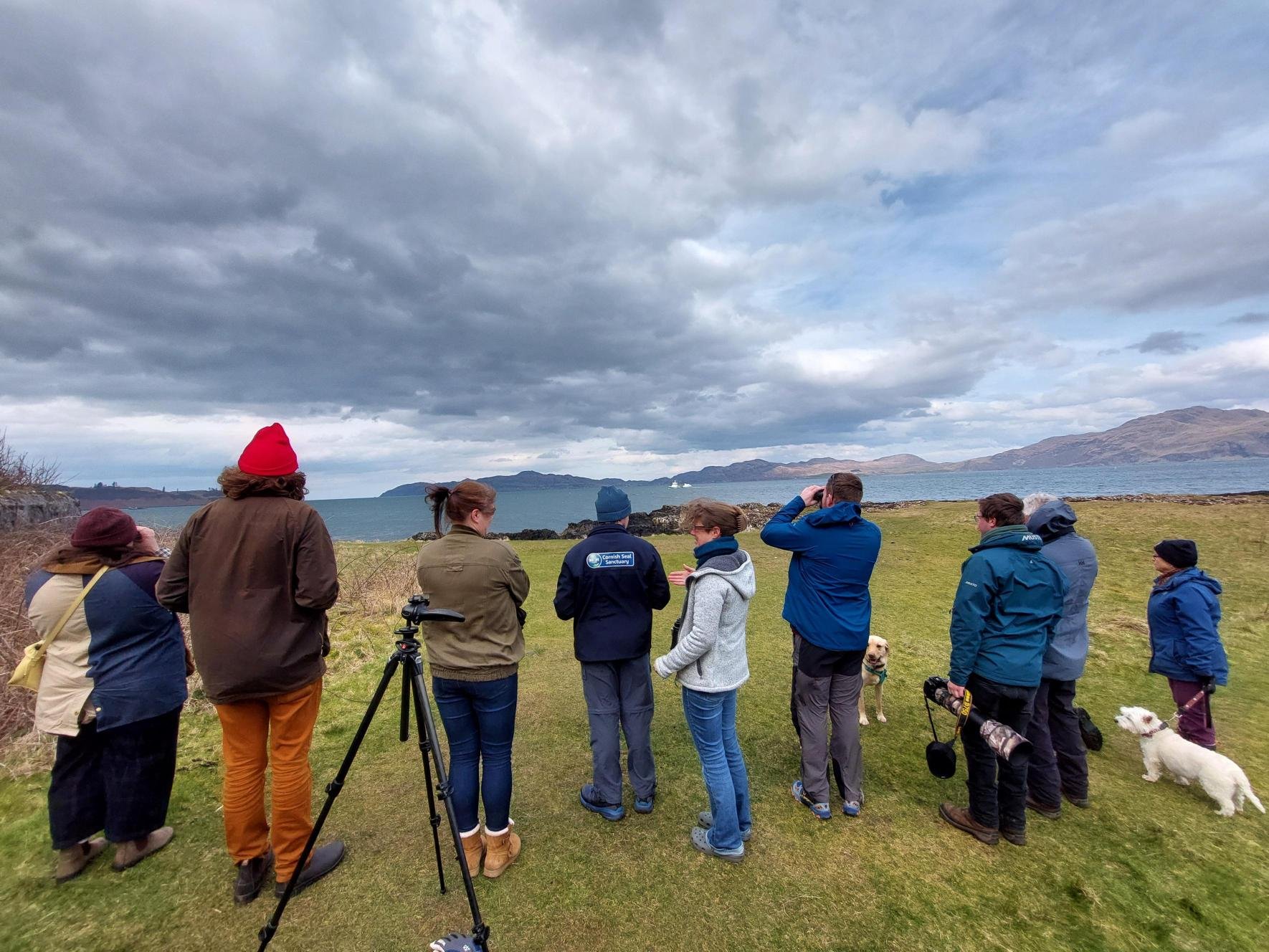A Wonderful Winter for Watching: Whale Track Summary
©Western Isles Cruises
As signs of spring are beginning to appear and everyone looks forward to the season ahead, we take a look back at what was a wonderful winter for watching.
This winter we set the #EmbraceYourWhaledSide challenge to encourage more people to embrace the crispness of winter and spend some time outside watching from land, collecting vital effort-based data, to help deepen our understanding of the presence and absence of species in our seas year-round.
Well, our amazing Whale Track community didn’t disappoint. Thanks to 105 people reporting their sightings through land-based surveys, excursion mode and casual - you have increased our dataset this winter. A fantastic 62 land-based surveys were conducted (almost 7x more than in 2023) resulting in 35 sightings, 14 excursions were recorded (more than double than in 2023) with 13 sightings, and 271 casual sightings reported. Totalling 319 sighting reports of 1,936 animals from 11 different species this winter.
“We’d like to say a massive THANK YOU to our dedicated and hardy Whale Track community for taking on this challenge and continuing to monitor our seas, building our understanding of the cetaceans in our waters throughout the year. A special shout out to Sarah-Macdonald-Taylor who contributed an impressive 47 of the 62 land-based surveys.”
So, with the start of a new year, what does our first podium of the year look like?
The first 3 species on the podium may not come as much of a surprise, with harbour porpoise (136 sightings of 467 animals), common dolphin (78 sightings of 1008 animals) and bottlenose dolphins (51 sightings of 312 animals) each taking the top 3 spots. However, this winter, unlike last, humpback whales come in as the 4th most sighted animal (19 sightings of 19 animals) with killer whales very close behind (15 sightings of 58 animals), proving that winter can truly be a wonderful time to watch.
*This data has not been analysed or corrected for effort.
WHALES IN THE BIG CITY
©Gordie Bryce
Following on from the exciting sightings made from Scottish cities (Edinburgh and Inverness) during autumn, this trend continued into winter, with a flurry of exciting sightings in the Firth of Forth.
First reported in mid-November, by multiple reporters, a sei whale which was seen for multiple weeks, but even more exciting for everyone watching, a lucky few that braved the cold, were treated to a rare sight of both a sei and humpback whale in close proximity.
Gordie Bryce captured some fantastic shots of the sei whale showing the identifiable sinking behaviour, which helps distinguish the animal from other similar looking species.
Since these sightings, more reports of humpback whales have come in. Andy Knight reported a humpback off the Caithness coast in January, seeing the whale breach, followed by a low bushy blow, 4km off Latheronwheel. Meanwhile in Aberdeen, Hannah Downie reports a humpback whale off Balmedie, watching it with binoculars for around 10 minutes as it breached continuously. What an incredible sight!
Although sightings of humpback whales have been increasing in recent years and the Scottish Humpback Whale Catalogue continues to grow with more individuals year on year, it is important to remember that these animals were once hunted to near extinction and populations are still below what they were pre-whaling. Read Conor Ryan’s brilliant blog about historic whaling in Scotland and how these records can highlight what populations of species used to look like in our seas.
KILLER WHALES
This winter saw 15 reports of killer whales across Scotland; from the far north in Shetland - where Tanya Gray spotted 6 individuals travelling and foraging in December - to the Caithness coast - where Lorna Jappy snapped these impressive images of a pod of 6 individuals seen to be feeding south of Wick in January. While Liam Pritchard, on the Moray coast, spots 3 killer whales travelling past Hopeman.
A particularly exciting sighting has to be that from the Western Isles Cruises school boat, when they were treated to an incredible surprise sighting of two killer whales, who soon were identified as being none other than John Coe and Aquarius. If there were any school children on the school boat at the time, what an incredible way to start the school day!
And as is becoming a regular feature of these sightings blogs, as I am writing this, we’re getting some exciting reports that I just have to share, even though they are outwit the dates for this summary. John Coe and Aquarius were spotted this morning (28 March) just off north Mull, by local fisherman, Farley and Kenny, so some of the team headed out to try and spot them too.
Heading to Tobermory Lighthouse, one of the Hebridean Whale Trail sites on Mull, the team were joined by a group of enthusiastic watchers, all hoping to get a glimpse of these two magnificent killer whales. Luckily, not long after arriving, two fins were spotted breaking the surface of the water and a chorus of ‘they’re up!’ rang out as everyone turned their binoculars towards the sight of John Coe and Aquarius, as a plume of a blow wafts across the surface of the water and the boys once again sink out of sight.
©Farley
For many of the group watching, this was their first sighting of the boys, and for some of any killer whale. It’s always a special moment when you get to share a first sighting with people, but it was extra special for the team, as not only did our brand new residential volunteers (who were just starting their first day with us!) Lauren and Kai get to see them, but our very own Communications Manager, Morven, and First Mate, Zoe, finally saw the boys for the first time, after many years of trying! It was also a special moment for one of our Trustees, Alexa, who lives at the light house cottages, so got to see them from her back garden! Cam, who is joining a our first research expedition on board Silurian today, also joined the party - what a fantastic start to his adventure.
Group of lucky watchers getting a glimpse of John Coe and Aquarius off Tobermory Lighthouse
BASKING SHARKS
Basking sharks are seasonal visitors to Hebrides, typically being seen between May and October, with higher number of sighting reported around Coll, Tiree and Mull. Although we do occasionally get reports of basking sharks outwit these months, this year saw the earliest report since Whale Track launched in 2017 - though it’s important to note that we’ve been collating community sighting reports since 1994, so more investigation is needed to determine if it is the earliest report on record for the west coast.
This years first sighting of a basking shark came from Peter Allen on 15 February, just a couple days before our friends at the Irish whale and Dolphin Group received their first report of a basking shark off the Irish coast.
Peter spotted the basking shark off the coast of Arran, thinking initially it was a seal’s head bobbing about. Thankfully, Peter continued to watch the animal, noticing how pointed it looked, when finally the dorsal and tail fin appeared, staying on the surface for a mere 30 seconds, enough time for Peter to confirm it was a basking shark.
These gentle giants were hunted extensively in Scotland’s waters, with the last commercially caught as recently as the 90’s. Now protected in our seas, the basking shark has a chance to recover, but there is still a lot we do not know, and every sighting contributes to our understanding of these magnificent animals.
WHITE BEAKED DOLPHINS
Although a species which can be seen year-round in Scotland, white-beaked dolphins are one of the less reported species with only 239 reports since Whale Track launched in 2017.
White-beaked dolphins have a relatively restricted range and are only found in the temperate and subarctic waters of the North Atlantic. The Hebrides are towards the southern extreme of their range. Here, they are usually seen in open waters further from the coast and favour the waters around the Outer Hebrides and the north Minch.
In February, Nat and Ian Ward reported seeing four white-beaked dolphins while watching from land off the tip of Lewis. We were excited to see Andy Lawson’s report of two white beaked dolphin spotted from a ferry while crossing the Minch, where he managed to snap this fantastic photograph, showing the distinctive colouration of these beautiful animals.
© Andy Lawson
As signs of spring are beginning to appear, with the occasional break in the wind and rain, and the daylight hours increasing, we are excited to see what you spot over the coming months. As the seas become busier with wildlife and people, we want to give a gentle reminder to everyone, on or in, our wonderful seas this year, to be mindful of who you are sharing the space with. Please follow the Scottish Marine Wildlife Watching Code, to minimise disturbance to wildlife.


